The Environmental and Geological Significance of Varkala Geo-Heritage Site: Urgent Action Required
Preserving a Unique Natural Monument: A Call for Coordinated Conservation Efforts
Introduction
The Varkala Cliff at Papanasam Beach, located in Varkala Village, Thiruvananthapuram District, is a geological wonder of immense significance. Recently, this site has come under threat due to actions taken by local authorities that have raised concerns among environmentalists and geologists alike. This article highlights the importance of the Varkala Cliff as a Geo-Heritage site, the recent actions that threaten its integrity, and the urgent need for coordinated efforts to protect this invaluable natural monument.
Importance of Varkala Geo-Heritage Site
Varkala Cliff, known geologically as the Warkhali Formation, stretches for approximately 6 kilometers along the coast and rises to about 80 feet above sea level. This cliff is one of the few natural formations along the eastern coast of India, making it a unique feature in the country’s coastal geomorphology. Recognized by the Geological Survey of India (GSI) as a Geo-Heritage site, it holds significant scientific, educational, and aesthetic value. The cliff is under consideration for inclusion in the UNESCO World Map of Geoheritage sites, underscoring its global importance.
GSI’s 2014 Resolution: Declaring Varkala Cliff as a Geological Heritage Site
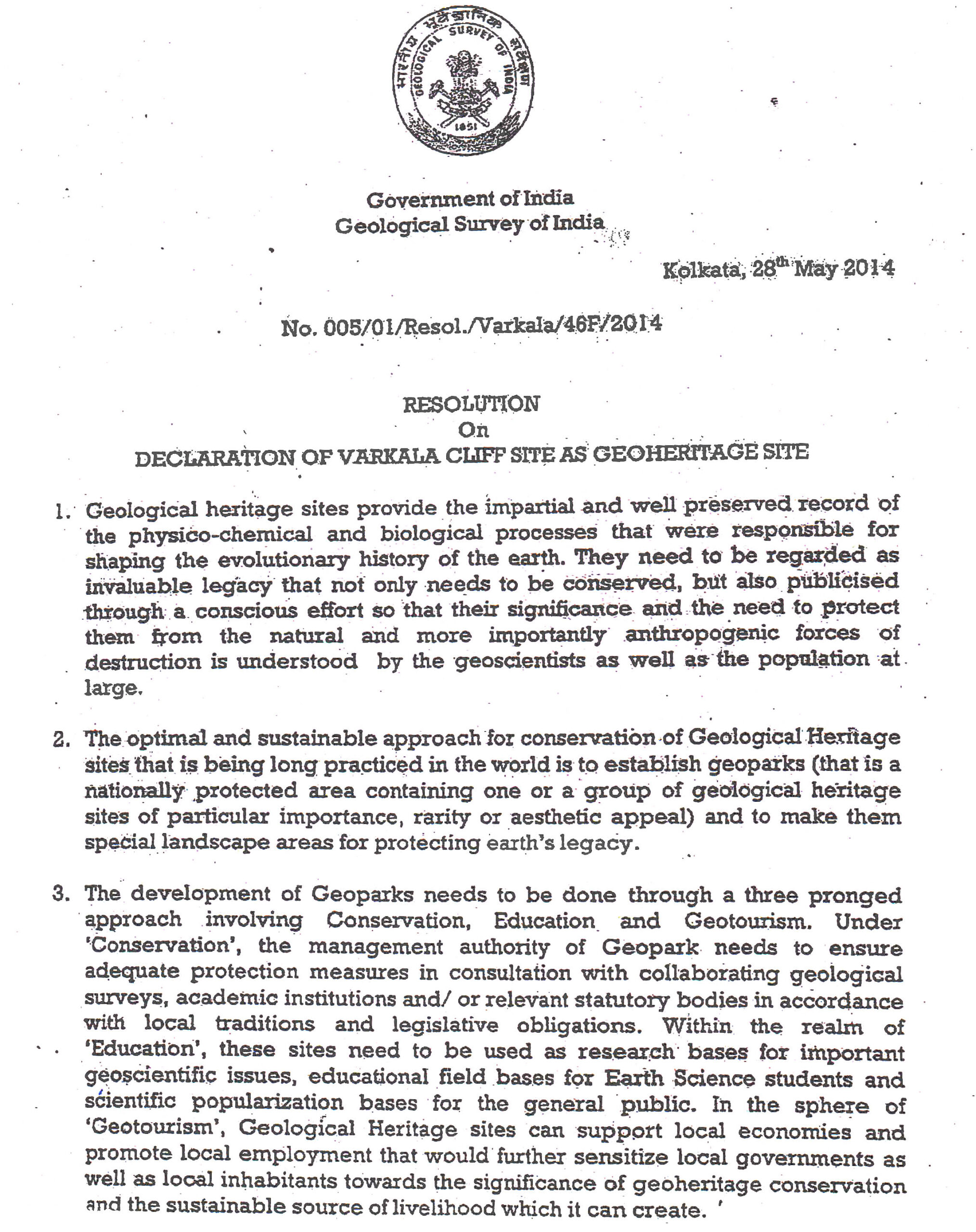
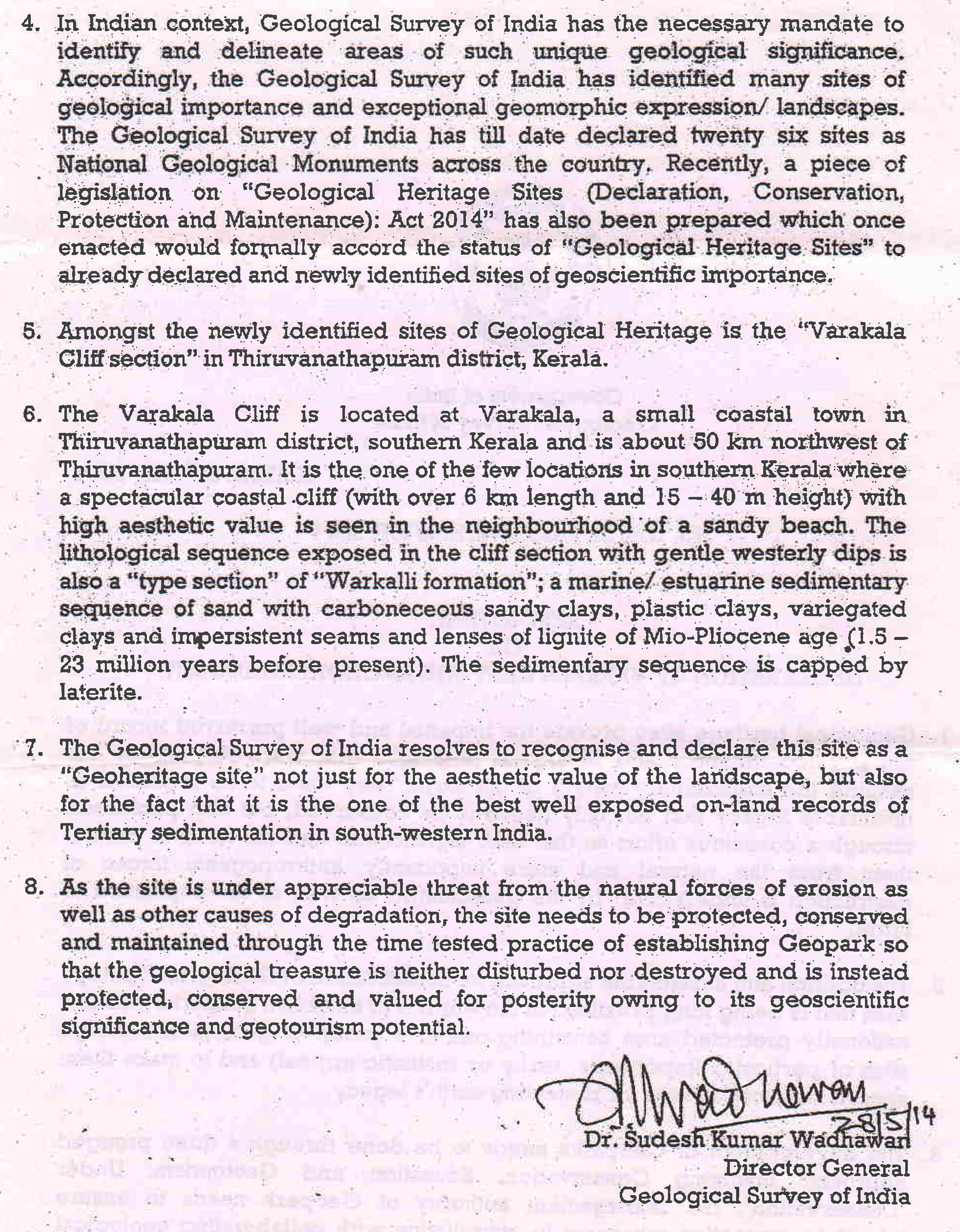 In 2014, the Geological Survey of India (GSI) recognized the immense scientific and cultural value of the Varkala Cliff by officially designating it as a Geo-Heritage site through Resolution No. 005/01/Resol./Varkala/46F/2014, dated May 28, 2014. This resolution highlighted the cliff’s unique geological features, its role in India’s coastal geomorphology, and its importance for scientific research and education. The GSI’s declaration aimed to ensure the preservation and protection of Varkala Cliff from any activities that could compromise its integrity and significance, emphasizing the need for stringent conservation measures to safeguard this natural wonder for future generations.
In 2014, the Geological Survey of India (GSI) recognized the immense scientific and cultural value of the Varkala Cliff by officially designating it as a Geo-Heritage site through Resolution No. 005/01/Resol./Varkala/46F/2014, dated May 28, 2014. This resolution highlighted the cliff’s unique geological features, its role in India’s coastal geomorphology, and its importance for scientific research and education. The GSI’s declaration aimed to ensure the preservation and protection of Varkala Cliff from any activities that could compromise its integrity and significance, emphasizing the need for stringent conservation measures to safeguard this natural wonder for future generations.
Recent Threats and Legal Concerns
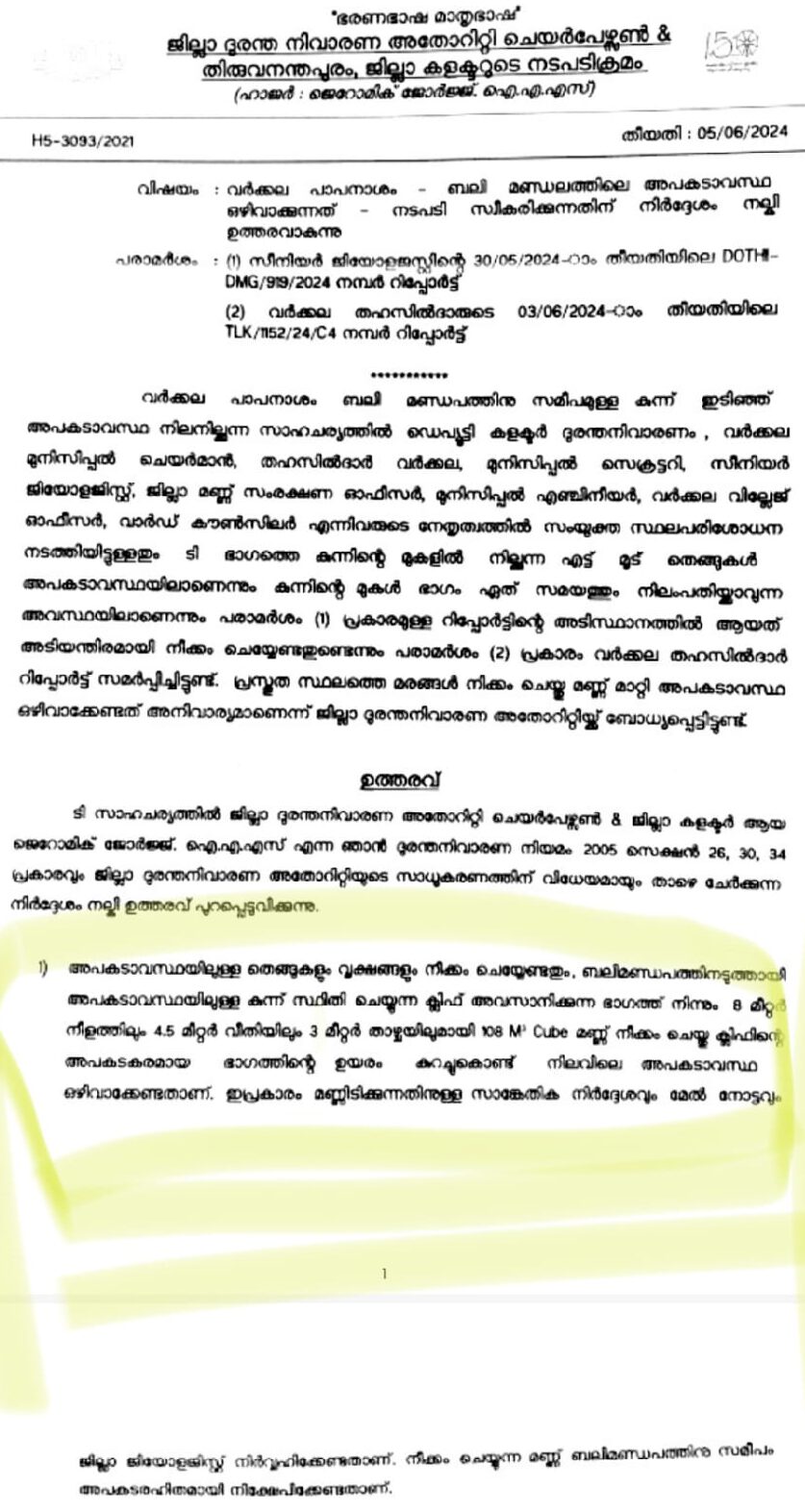
On June 7, 2024, demolition activities commenced on the Varkala Cliff following an order by the District Collector of Thiruvananthapuram, acting as the Chairperson of the District Disaster Management Authority (DDMA). This decision, made under the Disaster Management Act of 2005, appears to have been taken without a thorough understanding of the cliff’s geo-heritage status or adequate consultation with relevant authorities, including the GSI and Kerala Coastal Zone Management Authority (KCZMA).
The demolition was justified on the grounds of public safety, but it failed to account for the significant geological and heritage value of the site. Notably, the District Collector admitted ignorance of the Varkala Cliff’s national geo-heritage status. This lapse points to a serious failure of governance and inter-departmental communication. Moreover, the demolition prioritized unauthorized constructions over natural heritage, an action that violates existing conservation regulations and ethical standards.
Need for Coordinated Action
The demolition activities highlight a critical need for better coordination among various stakeholders involved in the management and protection of Varkala Cliff. Other than the representative of Director General of the Geological Survey of India (GSI, Kolkata) / Deputy Director General, GSI, Thiruvananthapuram and the District Collector of Thiruvananthapuram, the following key authorities and stakeholders are also crucial:
- Chief Engineer/Executive Engineer, Major Irrigation: Responsible for laying protection walls and groins on the seashore below the cliff region. The Tourism Department and Municipality have damaged these structures multiple times without their knowledge, severely affecting the stability of the cliff’s bottom region.
- Secretary of the Varkala Municipality: Responsible for preventing violations in the area and the official local custodian of this area, particularly the unsurveyed land belonging to the central ministry.
- Member Secretary of the Kerala Coastal Zone Management Authority (KCZMA): Responsible for enforcing coastal regulations. The bottom region of the cliff is considered as High Tide Line (HTL), and from there, it is designated as No Development Zone (NDZ) for 200 meters according to the Coastal Zone Management Plan (CZMP) 2011. The revised 2019 plan reduces this to 50 meters from HTL.
- Principal Secretary of the Environment Department: Overseeing environmental protection initiatives.
- Deputy Collector of the District Disaster Management Authority: Involved in disaster management decisions affecting the site. Conducted site visits on behalf of the District Collector on three separate occasions over a 20-day period and prepared a report with the Senior Geologist and Tahsildar, Varkala.
- Director of the State Disaster Management Authority (KSDMA): Overseeing disaster management policies. Responsible for conducting an inquiry into why and under what circumstances the Chairman of DDMA enforced the Disaster Management Act-2005 at this Geo-Heritage Site.
- Regional Fire and Rescue Officer, Department of Fire and Rescue Services, Thiruvananthapuram: Responsible for opinions and actions in case of collapse or any dangerous situation.
- Director of the Tourism Department: Overseeing tourism-related activities that impact the site.
- District Geologist of the Mining and Geology Department: Misled the District Collector with an inaccurate report regarding the site.
- Director, National Centre for Earth Science and Studies (NCESS): Providing scientific expertise and research. Conducted a recent study without consulting the Geological Survey of India and proposed a plan submitted to the State Government.
- Executive Engineer of the Public Works Department (PWD): Responsible for infrastructure development in the area.
- Executive Environmental Engineer of the Kerala State Pollution Control Board: Ensuring environmental standards are maintained.
- Member Secretary of the Kerala State Biodiversity Board (KSBB): Overseeing biodiversity conservation efforts.
- District Town Planner of the Regional Town Planning Office in Thiruvananthapuram: Involved in planning and development.
- Representative from VIVID Corporation: An SPV dedicated exclusively to Varkala tourism development under the Chief Minister.
- Local Representatives from both State and Municipalities (MLA and Ward Councilors): Representing the local population’s interests.
- People and Environmentalist Representatives: Including representatives from the community and environmental organizations to ensure their voices are heard.
Recommendations for Immediate Action
- Immediate Cessation of Demolition Activities: All ongoing demolition activities should be halted to prevent further damage to the Varkala Cliff.
- Thorough Investigation: A comprehensive investigation should be conducted into the events leading up to the demolition order, focusing on the lack of consultation and awareness regarding the site’s heritage status.
- Formation of a Coordinated Body: Establish a unified body comprising representatives from the GSI, KCZMA, environmental groups, and local authorities to oversee the protection and management of the Varkala Cliff.
- Public Awareness Campaigns: Launch initiatives to educate both the public and officials about the importance of geo-heritage sites and the need for their preservation.
Conclusion
The Varkala Cliff is not just a geological formation but a testament to the natural history and heritage of India. Its protection requires a concerted effort from all stakeholders, informed by a deep respect for its scientific and cultural significance. Immediate and decisive actions are necessary to rectify the current situation and ensure that such oversights do not occur in the future. The preservation of Varkala Cliff is a matter of national and global importance, demanding our urgent attention and responsible stewardship.
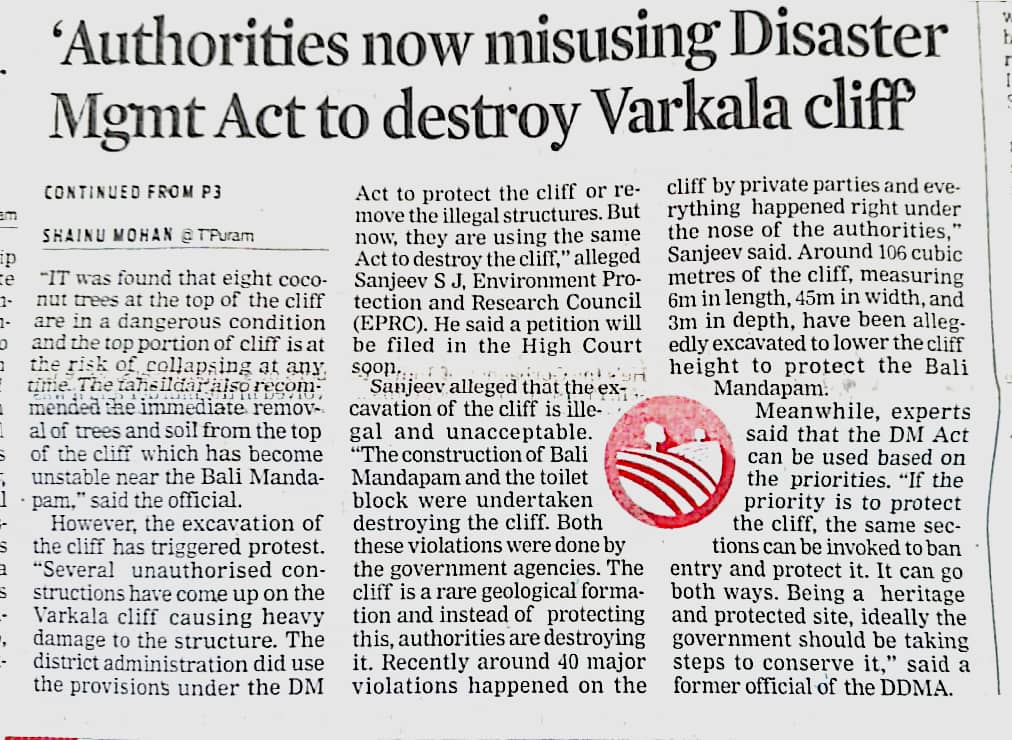
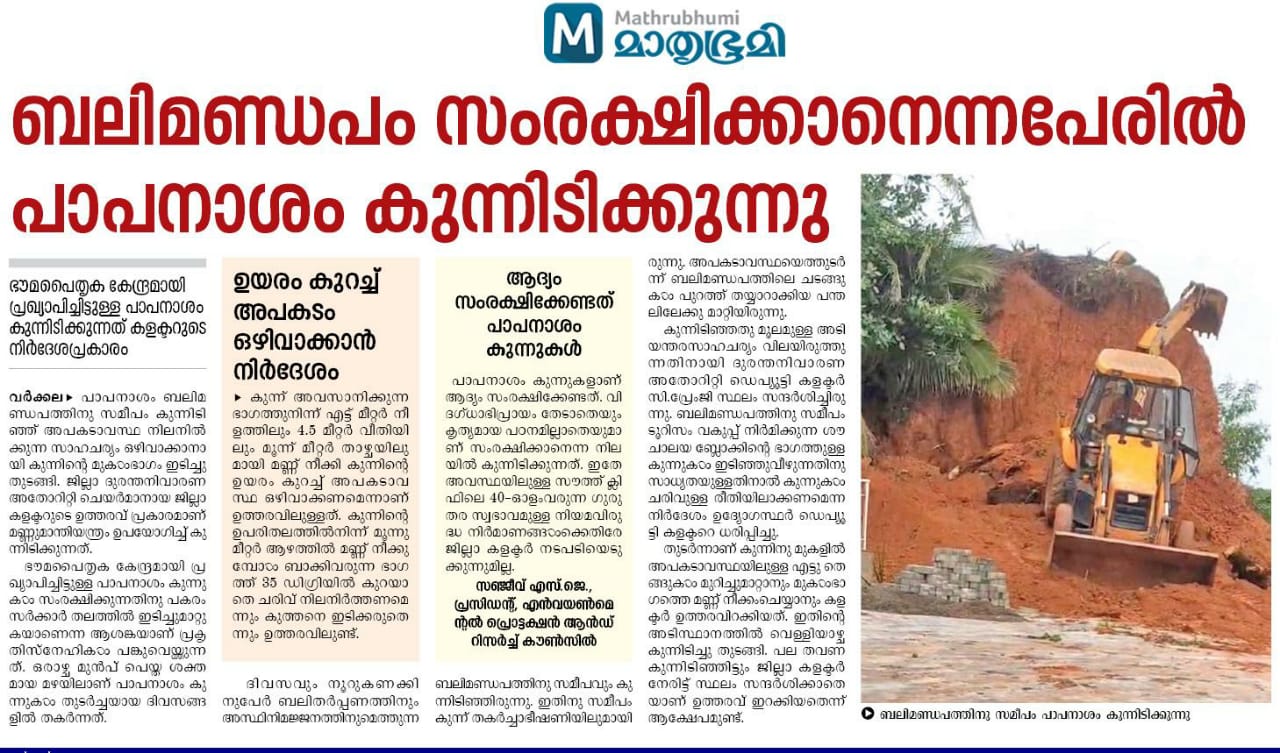
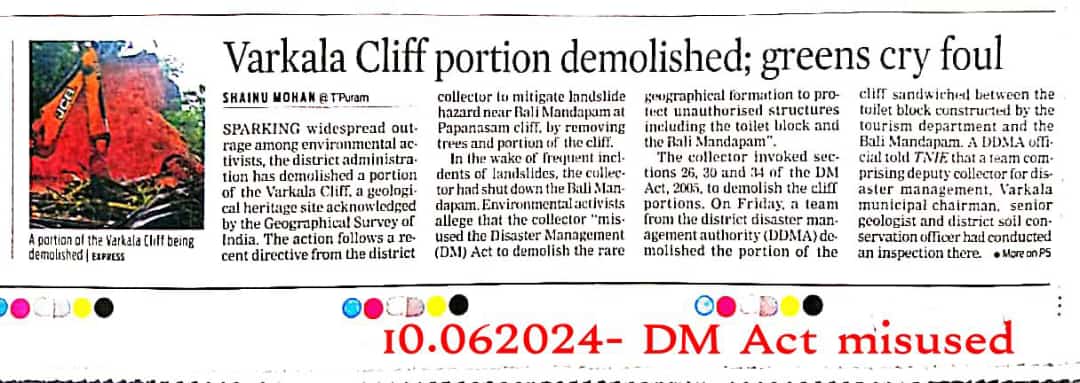
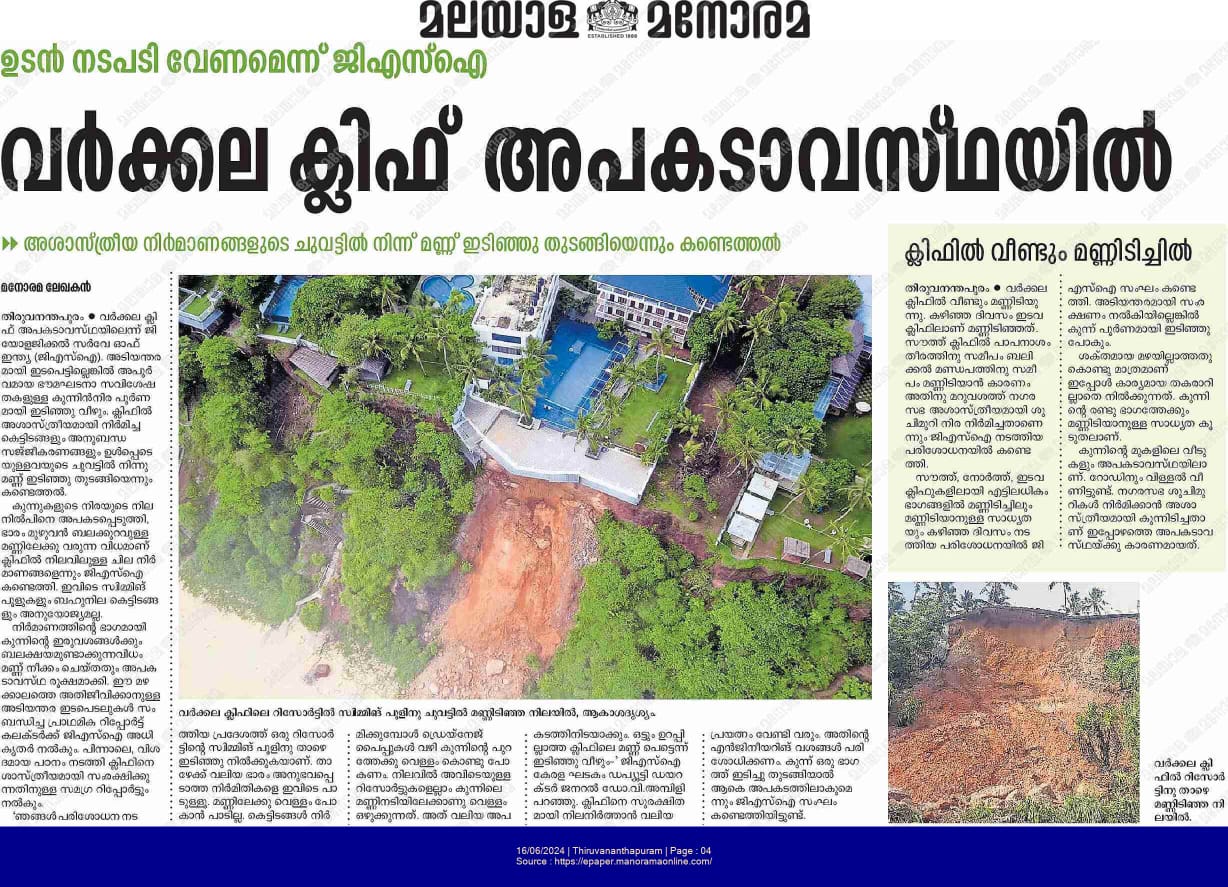

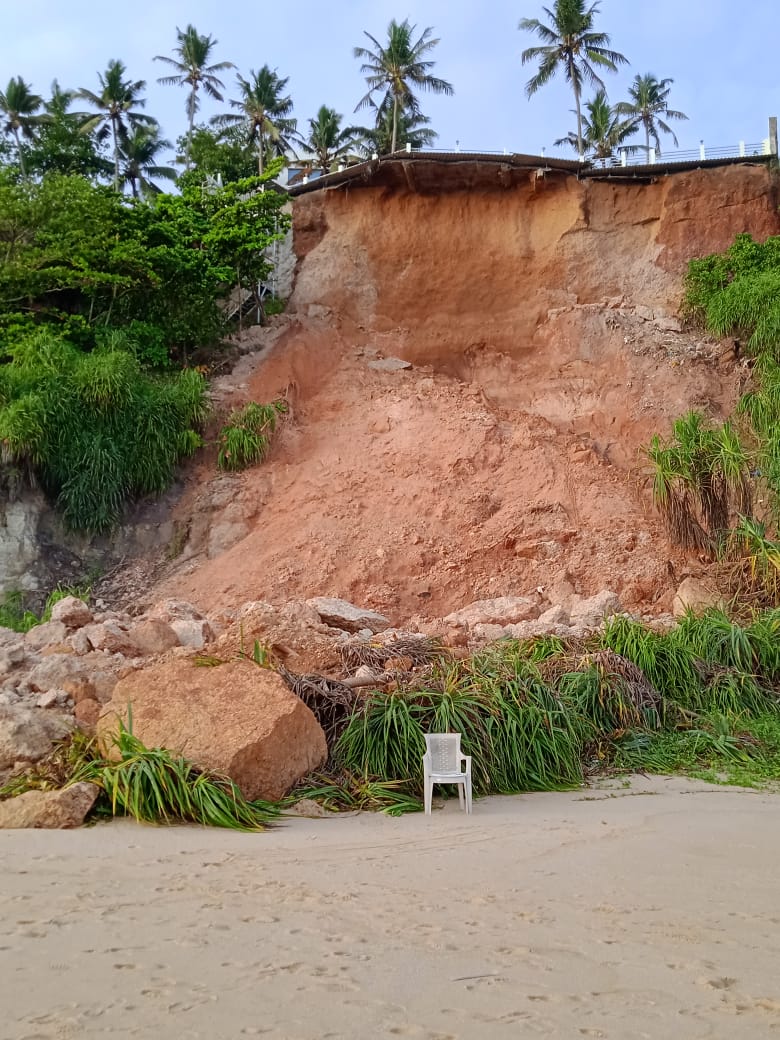
Leave a Reply